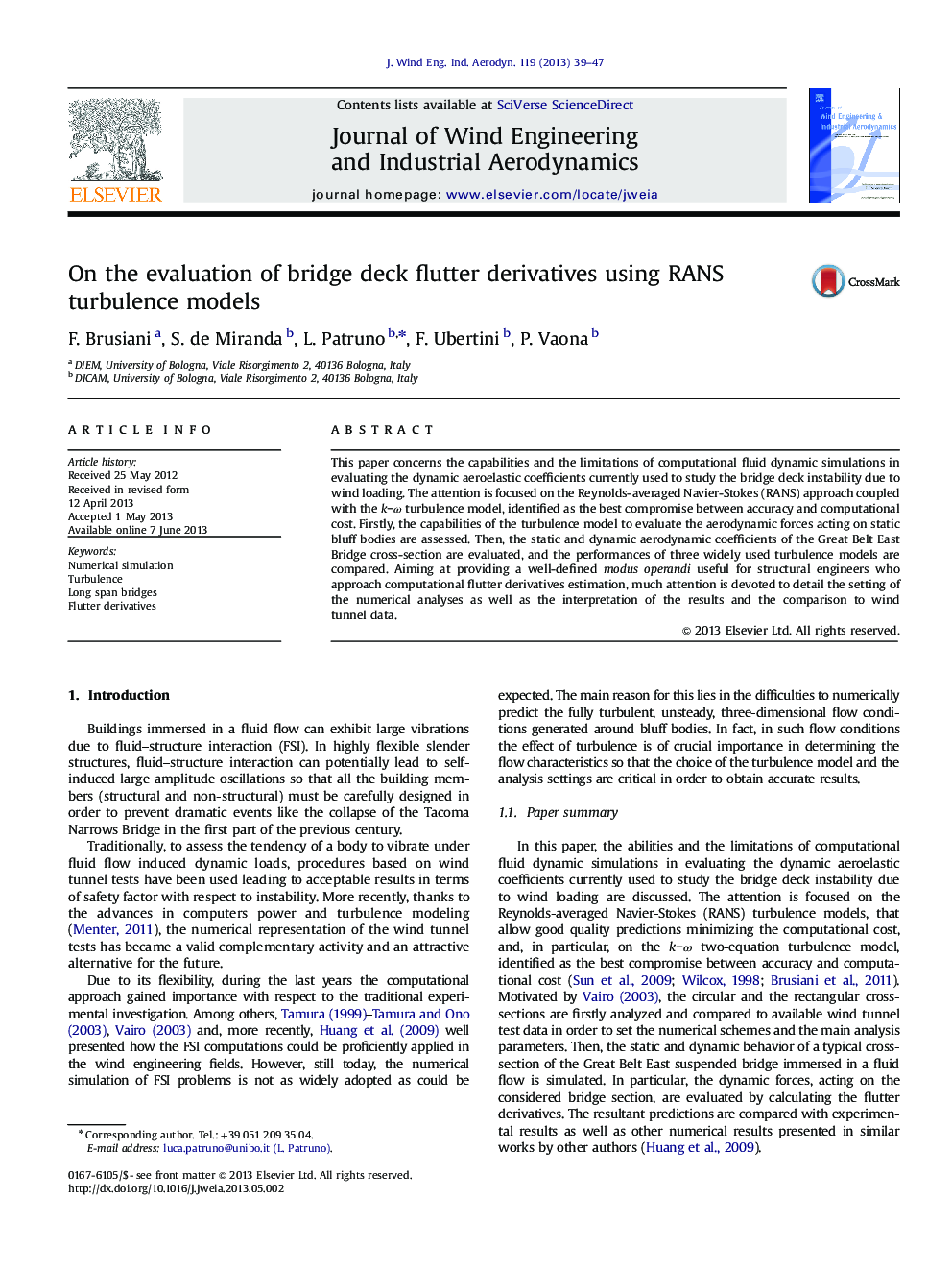| Article ID | Journal | Published Year | Pages | File Type |
|---|---|---|---|---|
| 6757796 | Journal of Wind Engineering and Industrial Aerodynamics | 2013 | 9 Pages |
Abstract
This paper concerns the capabilities and the limitations of computational fluid dynamic simulations in evaluating the dynamic aeroelastic coefficients currently used to study the bridge deck instability due to wind loading. The attention is focused on the Reynolds-averaged Navier-Stokes (RANS) approach coupled with the kâÏ turbulence model, identified as the best compromise between accuracy and computational cost. Firstly, the capabilities of the turbulence model to evaluate the aerodynamic forces acting on static bluff bodies are assessed. Then, the static and dynamic aerodynamic coefficients of the Great Belt East Bridge cross-section are evaluated, and the performances of three widely used turbulence models are compared. Aiming at providing a well-defined modus operandi useful for structural engineers who approach computational flutter derivatives estimation, much attention is devoted to detail the setting of the numerical analyses as well as the interpretation of the results and the comparison to wind tunnel data.
Related Topics
Physical Sciences and Engineering
Energy
Renewable Energy, Sustainability and the Environment
Authors
F. Brusiani, S. de Miranda, L. Patruno, F. Ubertini, P. Vaona,
